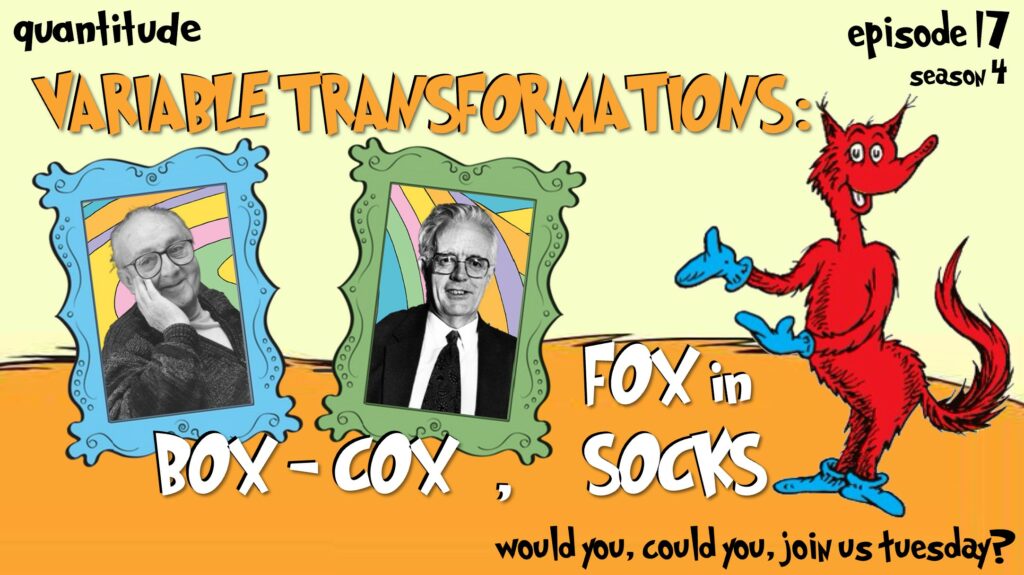In this week’s episode Greg and Patrick discuss variable transformations, both linear and non-linear, and explore the potential pros and cons of using these in applied research settings. Along the way the also discuss prank phone calls, English drama, rapping Dr. Seuss, persnickety estimation, weekly banana intake, it don’t make no never mind, Jeffry Bezos, the square root of .5, leverage out the wazoo, sexy and rage Hulk, frowny-face plots, a barn full of methods, the actual analysis of data, the principles of witchcraft, statistical insults, and massaging your y.
Related Episodes
S2E17: Embracing Your Non-Normality
S2E27: (re)Connecting With Discrete Data
S3E17: Logistic Regression: 2 Logit 2 Quit
Suggested Readings
Box, G. E., & Cox, D. R. (1964). An analysis of transformations. Journal of the Royal Statistical Society: Series B (Methodological), 26, 211-243.
Box, G.E., & Cox, D.R. (1982). An analysis of transformations revisited, rebutted. Journal of the American Statistical Association, 77, 209-210.
Dagenais, M. G., & Dufour, J. M. (1994). Pitfalls of rescaling regression models with Box-Cox transformations. The Review of Economics and Statistics, 571-575.
Osborne, J. (2010). Improving your data transformations: Applying the Box-Cox transformation. Practical Assessment, Research, and Evaluation, 15, 12-21.
Sakia, R. M. (1992). The Box‐Cox transformation technique: a review. Journal of the Royal Statistical Society: Series D (The Statistician), 41, 169-178.
Spitzer, J. J. (1982). A primer on Box-Cox estimation. The Review of Economics and Statistics, 307-313.
Vélez, J. I., Correa, J. C., & Marmolejo-Ramos, F. (2015). A new approach to the Box–Cox transformation. Frontiers in Applied Mathematics and Statistics, 1, 12-22.

